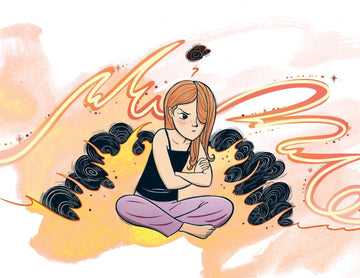Simply start with talking about emotions.
When you see a child experiencing an emotion, help them label it. For example, I might see my son getting really frustrated, so I will say, “Wow, you look like you might be feeling frustrated. Would you like some help?”
Help them learn to label what they feel.
Give them the words to describe their emotions. That is the entire reason we created the book, How Do I Feel? A Dictionary of Emotions for Children, to help empower children with the words to match how they feel. This helps them feel less alone and understand what might be driving them to behave in a certain way.
Start talking more about how you feel.
It can seem foreign to a lot of us because it definitely wasn’t how I was raised. Did you grow up hearing your parents express how they felt? I have found in my family that being open about how I feel helps me to connect more with my children. No one is afraid to express themselves for fear of shaming or being dismissed. I don't let it all out, as I don't want to overwhelm them or make them worried about me, but I will say if I am feeling overwhelmed with all I have to do or maybe I am feeling a little exhausted or stressed.
I think it is such a positive for adults to share past experiences with children. I have shared times where I did something really embarrasing, or when I experienced shame. My children love hearing about these times. Especially when it relates to something that has happened to them in their life.
Validation!
Validation is an important technique that maybe we should all be using with each other. Not just the children. Validating a child’s feelings, no matter how silly they may seem, shows them you are really listening to them. You are allowing them to express how they feel in that moment.
Here is what validation may sound like. My sons are arguing. I can tell my youngest is frustrated with the older one correcting him constantly. I can tell because he starts yelling at the older one and then storms off. I go into his bedroom and ask him what happens. He is still really upset.
“Ollie keeps correcting me, like he knows everything and he doesn’t.”
I say, “How does that make you feel?”
“Really angry!”
I say, “I can see that you are angry because he keeps correcting you. It has made you really upset and I am sorry you feel that way. Can I do anything to help? Would you like a hug?”
Validation is like repeating back what you heard your child say. So they know you heard them. You don’t have to agree with them, you are simply acknowledging how they are feeling. Then you can work out, once everyone is calm, the best way to move forward in a positive direction.
This is a great opportunity to help them learn what they are feeling. If you think your child was actually feeling jealous or frustrated, instead of angry, you could talk about that.




